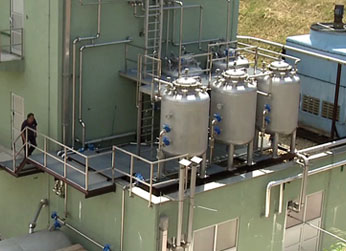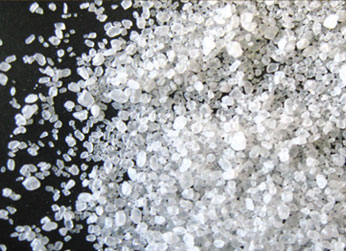HMX / RDX Plant
HMX synthesis is performed by acetic anhydride process, that is by hexamine nitration, using as the incoming components ammonium nitrate solution in concentrated nitric acid, hexamine solution in glacial acetic acid and acetic acid anhydride. Special emphasis is given to achieving a closed cycle process, which is accomplished by achieving a recovery of acid and solvent. Octogen obtained in our plant is in the form of stable β modification. The production process comprises a number of interlinked manufacturing phases: storing of raw materials, preparation of solutions, synthesis, stabilization, crystallization, recovery of acetic acid, recovery of solvent.
TECHNOLOGY
The plant is intended for manufacture of:
– Crystallized and phlegmatized HMX or,
– Crystallized and phlegmatized RDX.
Plant for the HMX/RDX production is of batch type, with operation in one or two shifts depending of capacity.
Solution of ammonium nitrate in nitric acid, and solution of hexamine in concentrated acetic acid is prepared in the building for solution preparation. Two other reactants i.e. concentrated acetic acid and acetic acid anhydride are stored in and transported from the same building.
Determined quantities of above reactants are transferred in the feeding vessels situated in the building for nitration, where from reactants are fed in nitrator and nitration process takes place. When nitration is ended the reaction mass is discharged into stabilization vessel where stabilization of obtained explosive is performed with addition of water. Suspension of explosive in weak acetic acid is then discharged onto filters in order to be separated.
From the building for nitration crude explosive is transported in water suspension to the building for crystallization. Required quantity of acetone is fed into crystallization vessel and crude explosive is added. The vessel is heated up and stirred and dissolved HMX/RDX is converted to the stabile beta modification. Crystallized explosive of required particle size is obtained by combination of evaporation and precipitation.
In the course of the process of phlegmatization, HMX/RDX is coated with other components (TNT, various waxes). Phlegmatization is carried out in the phlegmatization vessel. In this process phlegmatized HMX/RDX is filtered on batch filters.
Next phase is drying. Phlegmatized RDX/HMX is dried in drying chambers on trays. Dried phlegmatized HMX/RDX is then transported into the sieving and packaging house.





